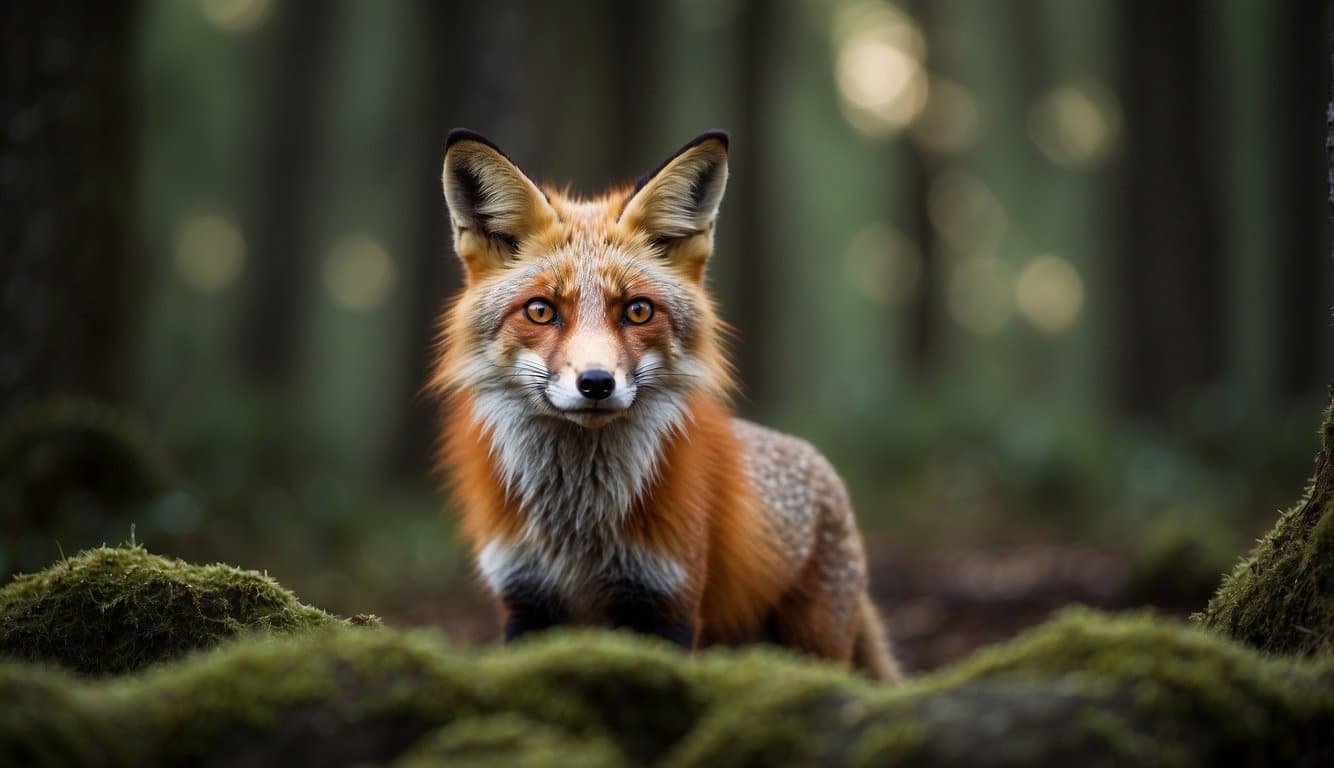Taxonomy of Foxes
Foxes are fascinating members of the Family Canidae, encompassing a range of species that display diverse traits and adaptations. The taxonomy of foxes reveals their place within the canine family and highlights their species diversity.
Classification Within Canidae
The Canidae family, otherwise known as canines, encompasses all foxes, with varied genera including Vulpes, Urocyon, and Lycalopex. The red fox (Vulpes vulpes), perhaps the most recognized of the foxes, finds its place in the genus Vulpes, a group known for their slender bodies and bushy tails. Other members, like the gray fox, belong to the genus Urocyon and are notable for their ability to climb trees.
The bat-eared fox and the fennec fox stand out within their genera due to unique adaptations; the bat-eared fox hailing from the African savannas is distinguished by its immense ears, while the fennec fox, with trademark oversized ears, is well adapted to the desert environment. Canids like the maned wolf and bush dog, which bear more unique appearances, also fall under the extensive Canidae umbrella, but they are quite distinct from what one typically recognizes as a fox.
Species Diversity
A spectrum of species exists within these fox-related genera, including those adapted to Arctic conditions like the Arctic fox and others such as the swift fox, found in North American prairies. The South American landscapes are host to several species, including the South American foxes, crab-eating fox, and the larger maned wolf. It’s interesting to note that despite varying drastically in size and habitat, from the fennec fox adapting to the Sahara’s dunes to the arctic fox living in frigid circumpolar regions, they trace back to a common ancestor in the Canidae family tree. Each species has developed unique hunting strategies, whether foraging for mice or other small prey, to ensure their survival across the planet’s diverse ecosystems.
Behavior and Habitat

Foxes, members of the canine family, exhibit a fascinating range of behaviors and adapt to diverse habitats across the globe. From the solitary red foxes of North America to the communal wild dogs of Africa, these canids have developed intriguing social structures and varied diets that reflect their ecological niches.
Hunting and Diet
Foxes are skilled hunters, relying on their sharp canine teeth and keen vision to catch a variety of prey, including rodents, birds, and rabbits. Although primarily carnivorous, foxes are actually omnivores; they readily consume fruit and occasionally feed on carrion. They’ve even been known to rummage through garbage in urban areas. Some species, like the gray foxes of North America, exhibit unique behaviors, such as climbing trees to hunt or forage, which sets them apart from their more ground-focused relatives.
Social Structure
Fox social structure varies by species. While many are solitary, some species, like wild dogs and wolves, live in packs that hunt and raise their pups cooperatively. Foxes communicate with a range of vocalizations that can signal anything from territory delineation to the social status within groups. For example, North American gray foxes tend to live solitarily or in monogamous pairs throughout the year. Contrastingly, canids like African wild dogs live in large packs led by a dominant breeding pair.
Physical Characteristics

Foxes are members of the dog family, known for their cunning behavior and distinctive physical features.
Distinctive Features
Foxes possess a range of features that set them apart from other canids. Their long, bushy tails, often used as a warm cover in cold weather, are one of their most noticeable traits. With long muzzles and pointed ears, foxes have a very characteristic profile. Beyond their facial structure, the teeth of foxes are specialized; they possess sharp canine teeth for gripping prey and strong molars for chewing.
Adaptations for Survival
In terms of survival, foxes have evolved highly adapted features. They have large ears that aid in acute hearing, important for hunting and detecting predators. Their eyes are designed for excellent night vision, making them effective nocturnal hunters. The long legs of foxes give them the agility and speed necessary to chase down prey or escape danger. They have a keen sense of smell and sensitive whiskers, which help in navigating their environment. Foxes exhibit a varied coat which can change with the seasons, offering camouflage. While fiercely carnivorous, some species can adjust their diet which aids in their adaptability across different habitats. Their remarkable breeding habits also ensure high survival rates of offspring, despite threats like rabies and habitat loss.
For more on the chromosomal basis of these characteristics, their comparative chromosome map can be referenced, and for an in-depth look at their polymorphism, you can read about the factors of their craniometric characters.

